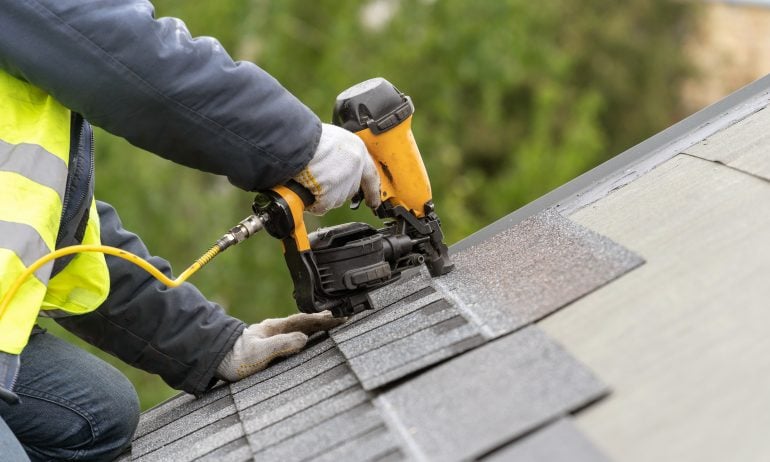Emergency Home Repairs? Here’s How to Get Help Fast
Emergency Home Repairs? Here’s How to Get Help Fast when disaster strikes at home—be it a burst pipe flooding your living room, a sudden electrical failure plunging your house into darkness, or a compromised roof exposing your family to the elements—time is of the essence. Emergency home repairs demand swift action. Not only can delays exacerbate the damage, but they also put your family’s safety and comfort at risk. But the good news? You don’t have to face this alone. Various avenues of emergency home repair assistance exist to help homeowners navigate these crises with speed and support.
In this comprehensive guide, you’ll learn everything you need to know about securing rapid help for urgent home repairs. From understanding what qualifies as an emergency to locating the right resources, applying for aid, and even managing repairs yourself effectively—this article is your trusted companion in turning chaos into calm.

Defining an Emergency Home Repair
Before diving into assistance options, it’s crucial to understand what constitutes an emergency home repair. Not every broken fixture or leaking faucet qualifies for emergency help. Generally, an emergency repair involves a condition that threatens:
- The safety and health of occupants
- The structural integrity of the home
- Basic utilities essential for daily living, like heat, water, or electricity
Examples include:
- Gas leaks or electrical hazards
- Severe water leaks or flooding
- Broken heating systems in winter
- Roof damage causing water intrusion
- Faulty septic or sewer system backups
Recognizing these emergencies early can expedite your access to emergency home repair assistance.
Why Swift Action Matters
Delaying emergency repairs often snowballs problems into more complex and costly situations. For example, untreated water damage can cause mold growth, structural weakening, and health hazards. Electrical malfunctions may lead to fires. Prompt repair not only saves money but protects your family’s well-being.
Additionally, many assistance programs require proof of urgency or documentation of damage severity. Acting quickly increases your chances of qualifying for expedited aid.
Sources of Emergency Home Repair Assistance
When faced with urgent repair needs, where do you turn? Several programs and organizations specialize in providing rapid financial help or resources.
1. Local Government and Municipal Aid
Many city or county governments offer emergency home repair assistance through housing departments or community development agencies. These programs often focus on low-income homeowners who cannot afford urgent repairs. Examples include grants or zero-interest loans for critical fixes.
Check your municipality’s website or contact local housing offices for details. Some areas have dedicated emergency repair funds, while others may fast-track standard repair programs for urgent cases.
2. Federal Programs
The federal government administers various programs that provide emergency housing repair assistance, especially following natural disasters.
- FEMA (Federal Emergency Management Agency): If your home has been damaged by a federally declared disaster such as a hurricane or flood, FEMA may offer grants for emergency repairs to make your home safe, sanitary, and functional.
- HUD (U.S. Department of Housing and Urban Development): HUD’s Community Development Block Grants (CDBG) sometimes include emergency repair components. Additionally, USDA Rural Development’s Section 504 program offers grants and loans for urgent repairs in rural areas.
3. Nonprofit and Charitable Organizations
Numerous nonprofits and faith-based organizations provide emergency home repair services, often focusing on vulnerable populations such as the elderly, disabled, or low-income families. Organizations like:
- Habitat for Humanity: Often assist with urgent repairs or modifications.
- Rebuilding Together: Specializes in critical home repairs for those in need.
- Salvation Army and local churches: Frequently offer emergency assistance or referrals.
These organizations may provide volunteers to perform repairs, financial aid, or materials.
4. Insurance Claims
If your emergency repair stems from damage covered by your homeowner’s insurance—such as fire, storm, or theft damage—file a claim promptly. Insurance often covers emergency repairs to prevent further damage, but policy specifics vary. Having detailed photos and documentation expedites the claims process.
5. Utility Company Assistance
Some utility providers offer emergency repair aid related to their services. For example, gas or electric companies might provide emergency repairs or safety shutoffs in hazardous conditions. Additionally, they may connect you with assistance programs for repair costs.
How to Qualify for Emergency Home Repair Assistance
While criteria vary by program and agency, common eligibility factors include:
- Income level: Many assistance programs target low- or moderate-income homeowners.
- Homeownership status: Typically, you must own and occupy the home needing repairs.
- Proof of emergency: Documentation such as inspection reports, photos, or contractor estimates may be required.
- Location: Some federal programs apply only to designated disaster areas or rural communities.
- Type of repair needed: The repair must address safety, health, or essential utility concerns.
Understanding these criteria ahead of time can help you tailor your application for success.
Step-by-Step Guide to Getting Help Fast
Step 1: Assess and Document the Damage
Before applying for assistance, conduct a thorough assessment of the problem. Take detailed photos or videos, note the severity, and list repairs needed. This documentation will support your application and insurance claims.
Step 2: Contact Local Housing Authorities or Community Agencies
Reach out to your city or county housing department or community action agencies. Ask about emergency repair programs and how to apply. They may offer expedited processing for urgent cases.
Step 3: Explore Nonprofit Organizations and Charities
Contact local branches of nonprofits like Rebuilding Together or Habitat for Humanity. Some may have waiting lists, but others maintain rapid response teams for emergencies.
Step 4: File Insurance Claims if Applicable
If the damage is insured, contact your insurer immediately. Prompt claims filing often speeds up payouts and emergency repairs.
Step 5: Apply for Federal Aid if Eligible
If your home is in a federally declared disaster area, visit FEMA’s website or HUD offices to learn about grants or loans for emergency repairs.
Step 6: Prioritize Repairs and Hire Trusted Contractors
Once funding is secured, prioritize critical repairs that ensure safety and habitability. Seek licensed and reputable contractors who can respond quickly. Some programs provide contractor referrals.
Tips to Expedite Emergency Home Repairs
- Maintain clear communication: Stay in touch with program representatives and contractors regularly.
- Prepare complete paperwork: Submit all required documents at once to avoid delays.
- Be honest and detailed: Accurately describe your situation and needs to ensure proper assistance.
- Leverage multiple resources: Combine insurance, government aid, and nonprofit help for best results.
- Stay organized: Keep copies of applications, correspondence, and repair receipts.
Preventing Future Emergencies with Proactive Maintenance
While emergencies can strike unexpectedly, regular home maintenance minimizes risks. Schedule seasonal inspections of your roof, plumbing, electrical systems, and heating. Address small repairs early to prevent escalation. Energy-efficient upgrades can also reduce system failures.
Programs offering routine maintenance grants or loans might be available in your area—check with local agencies.
Common Emergency Repairs Covered by Assistance Programs
- Roof repairs to fix leaks or structural damage
- Heating system replacement, especially in winter months
- Plumbing repairs for burst pipes or sewer backups
- Electrical system repairs to address hazards or outages
- Gas leak remediation and safety fixes
- Structural repairs to foundations or walls that threaten safety
Real-Life Examples of Emergency Home Repair Assistance
Consider the case of a family whose home suffered severe storm damage. Local government grants, combined with FEMA assistance, funded urgent roof replacement and electrical rewiring. This swift help prevented displacement and preserved the home’s value.
Another example is an elderly homeowner who experienced furnace failure in winter. A nonprofit organization quickly provided a replacement heating system, ensuring warmth and safety through the cold months.
These stories underscore the vital impact of emergency home repair assistance in preserving homes and lives.
The Importance of Community Support and Awareness
Communities thrive when neighbors help neighbors. Raising awareness about emergency repair resources encourages timely help-seeking and support networks. Local workshops, information sessions, and outreach campaigns help spread the word.
If you’re part of a community group or local government, consider facilitating access to repair assistance or volunteering with organizations offering aid.
Final Thoughts
Facing an emergency home repair is stressful, but help is available—and fast. By understanding the types of assistance offered, eligibility requirements, and application procedures, you can secure the funds and resources needed to restore safety and comfort swiftly.
Act promptly. Document thoroughly. Explore all avenues—from government grants to nonprofit programs—and leverage insurance coverage when possible. Your home is more than just a building; it’s a sanctuary. With the right support, you can protect it through any emergency.
Don’t wait for damage to worsen. Seek emergency home repair assistance now, and take control of your home’s safety and future.




